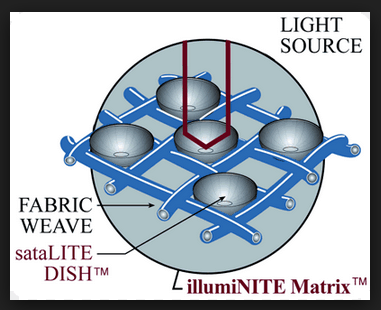When we first started in business in Cambridge, MA in the late 80’s, we were near MIT the Massachusetts Institute of Technology. There I meet Andy Hong of the MIT Media Lab, the first customer who brought a case of beer to us to thank us for a job well done. I digress…
Being near MIT, not surprisingly a high tech company moved in near us. The company was called Reflective Technologies and these MIT dudes produced reflective products under the moniker “Illuminite.” We affectionately referred to them as “the shiny guys.” There seemed to be no end of things they tried to make shiny, and it seemed in those days we printed lots of other glittery thing for other customers as well. I once remarked to my production manager Aaron that it seemed it was an endless supply of products we printed with caviar beads, glitter and reflective ink. He quipped, “crows and people like shiny thing.” They surely do.
Basically reflective ink is tiny glass beads with a reflective coating and then some sort of carrier.

There are effective plastisol inks now but probably water-based inks still work best. Basically you want the carrier to mostly go into the fabric and the beads to be on the outside where they will reflect light. Most reflective inks don’t look like all that much until light hits them. That makes them less than impressive when not illumined, and a very difficult thing to market. It also meant that when we printed for the shiny guys that it seemed that we had flashlights glued to the sides of our heads all the time, checking that the ink was really looking reflective.
Tom will post this weekend about improvements to reflective inks and how effective they can be but from where I sit, some reflections…
A few old school observations:
– reflectivity rarely meets anyone’s expectations. Folks want more shine than you can give them. Don’t oversell it.
– there are “fashion” and “industrial” reflectives, know what you are getting.
– water-based in general seems to work better.
– I don’t believe any reflected ink printed will meet ANSI safety standards. You will need transfers for meeting those requirements, printing will never accomplish it.
– printing thicker deposits of ink doesn’t necessarily mean more reflectivity
– be careful using additives or trying to color the ink, often that will kill the reflectivity
– the ink is always expensive, just running from expensive to extremely expensive. Get your costs figured out before bidding reflective jobs.
– make sure your customer absolutely knows that the most reflective inks only reflect light, they are not shiny when light is not shining on them.


Comments